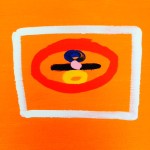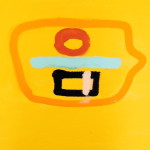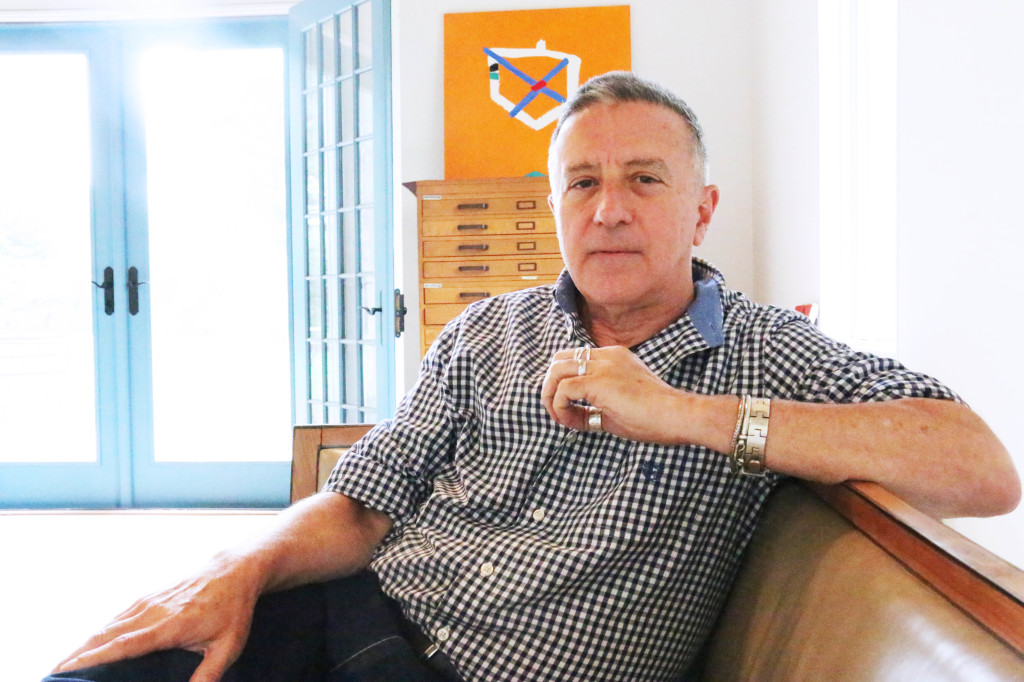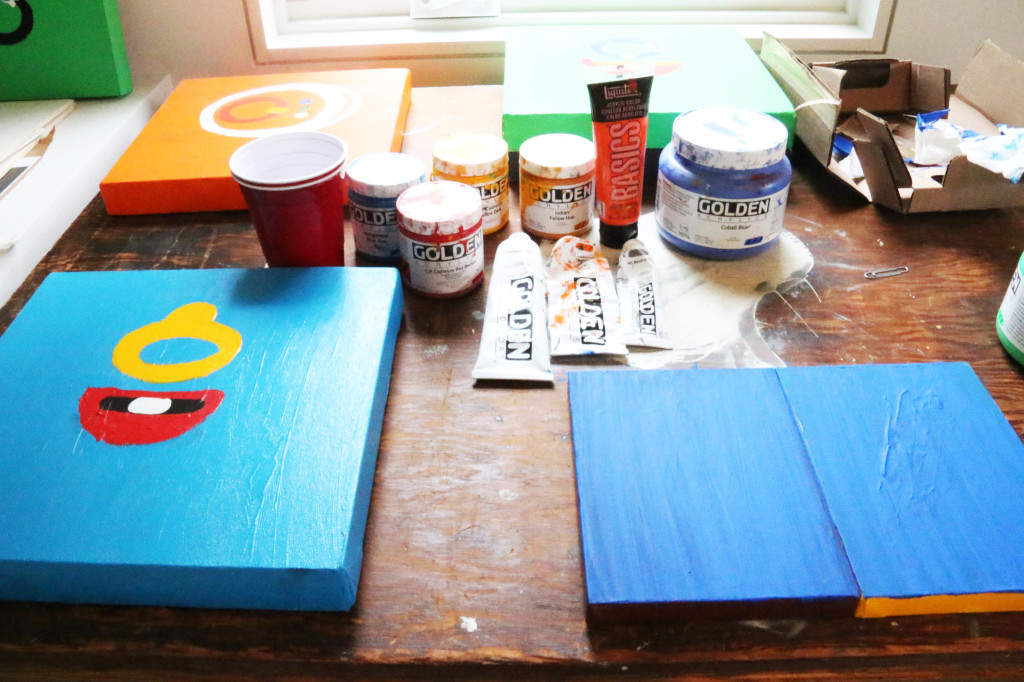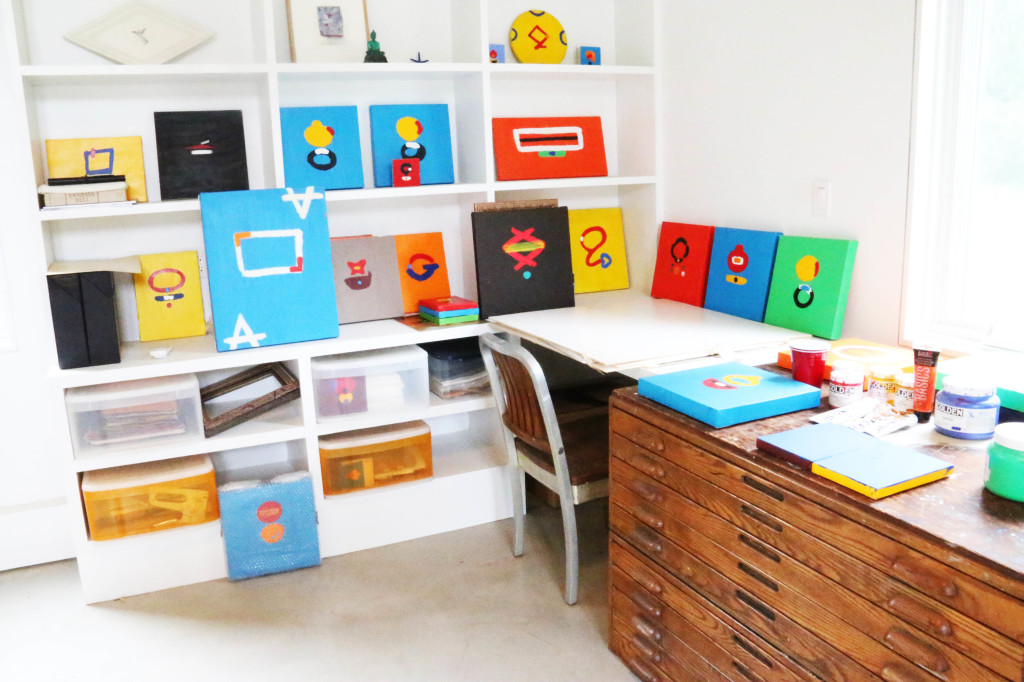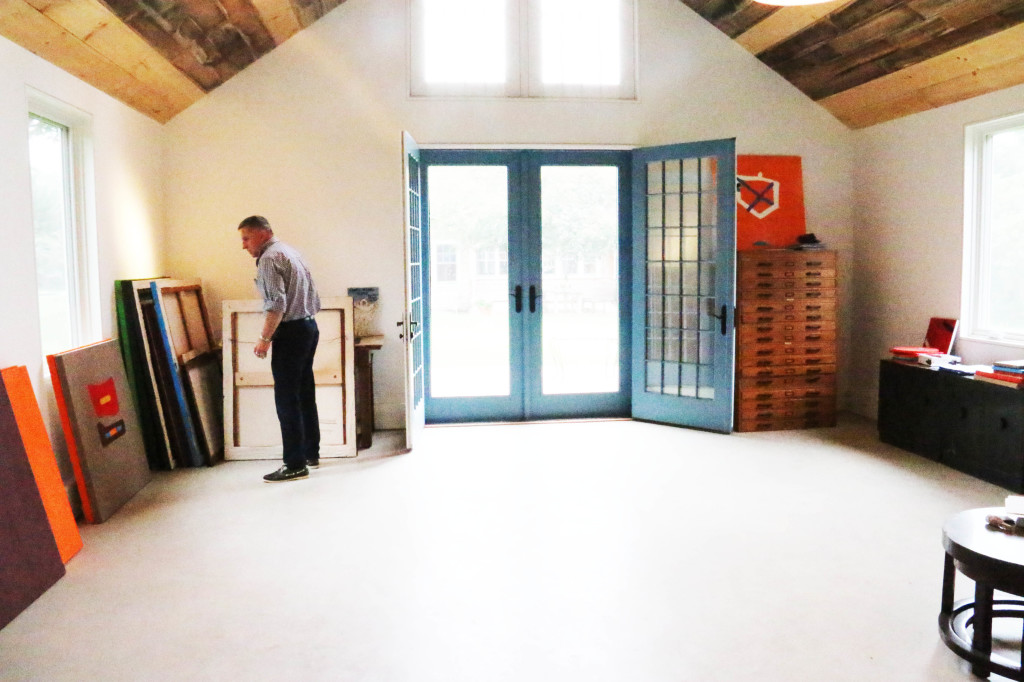“What he does show us is picture making without pictorialism, and he does this ingeniously, with a double entendre of abstraction – we see both the abstract image itself and an abstraction of the process of making it.”1
Nicholas Howey is a contemporary New York-based American painter whose abstract work is rooted in Modernist aesthetic. His use of pure bold color and minimalist geometric shapes is reminiscent of the works by Modern expressionist masters such as Johannes Itten and Joseph Albers. He creates his works by hand, often working on the floor without an easel.
Nick received his masters in printmaking, but was attracted to painting circa 1983 because he found the immediate gratification very satisfying. He comments, “I always had a minimal aesthetic, and not so much with an intellectual narrative. I was definitely influenced by the Post-Modern ideology at the time which emphasized the visual impact without needing theoretical knowledge necessarily. I always kept it simple.” The description found on the site of the West Collection claims that Nick’s work resembles “abstract shapes [that] appear to serve in a capacity similar to hieroglyphic symbols.” When I questioned him if this was indeed his intention, he answered, “Hieroglyphics are not a direct reference, no. I will do one thing and continue on until I decide to move on to another series. My work is not based on the past.”
In regards to his creative process, Nick explains that he creates a lot of drawings beforehand. Each work always is different because of size and color. Jokingly he comments that he “concentrates much better in a quiet environment, although [he does] enjoy listening to Fred Schneider from the B-52’s.”
A point in Nick’s career that I find exciting was that he worked as an assistant to Robert Rauschenberg (1925-2008) in the 80’s. Rauschenberg was an artist widely renowned for his artistic approach that is said to be rooted in the Neo-Dadaist movement which denied conceptual meaning in works and focused solely on aesthetics. Nick met Rauschenberg (Bob) through David White, his personal curator in 1983. Nick worked for Bob’s building, a former orphanage on Lafayette Street in New York City which is now the Robert Rauschenberg headquarters. While Bob moved away in the early 70’s to Captiva, Florida, he would return to Lafayette Street at least once a month for business or exhibitions either in the city or on his way to a European show. Nick suggests the theory that he moved because he was being disturbed by the art crowd day and night.
While in Florida, Bob became affiliated with Edison College in Fort Meyers because they invited him to curate the gallery space that lead to the theater. At first he put up his own work, but he grew tired of that and sought to display works by other artists. He invited Nick to exhibit his work there, but only on the condition that he create one large painting that was at least 10 feet long. Nick agreed which may have surprised Bob at the time. After the opening Nick told Bob that he could pick any painting he wanted as a gift and of course he chose the largest one. Subsequently, Nick became his assistant and worked with him from 1983 to 1990 after which he began to work with a Parisian art dealer, Antione Candau, and went to explore his own path. Nick emphasized that this was an important time in his life and that Bob had an extremely generous spirit that was unequaled in the art world.
Given the vibrant politics of the 70’s/80’s, I inquired as to whether sexuality affected his artistic practice and mentality at all. “I would say I felt that it had no direct effect,” Nick discloses, “However, as a gay man in the art world in 70’s New York, I did feel somewhat isolated since the beginning of the gay revolution was literally just getting started and everything was more fragmented at that time and differences were not so clearly defined.”
Later in Nick’s career Candau, the art dealer maverick mentioned above, invited him to participate in a huge exhibition in a warehouse titled “All is Quiet on the Western Front.” It was a curated show highlighting all young New York City artists. No one had ever done anything like that before and it marked a significant moment in the history of art.
Nick was not limited to the creation of paintings – he was also commissioned to create plateware for an Italian restaurant which he enjoyed very much. His design was elegant and simple, and he used a vintage photograph of the owner and painted a pink mark across her body (shown below).
Nick currently resides in Bridgehampton, New York, with his husband and still continues to create new works and participate in exhibitions.
—-
1Snitzer, Joan. “Nicholas Howey.” Tema Celeste: May-June 1991. Print.

